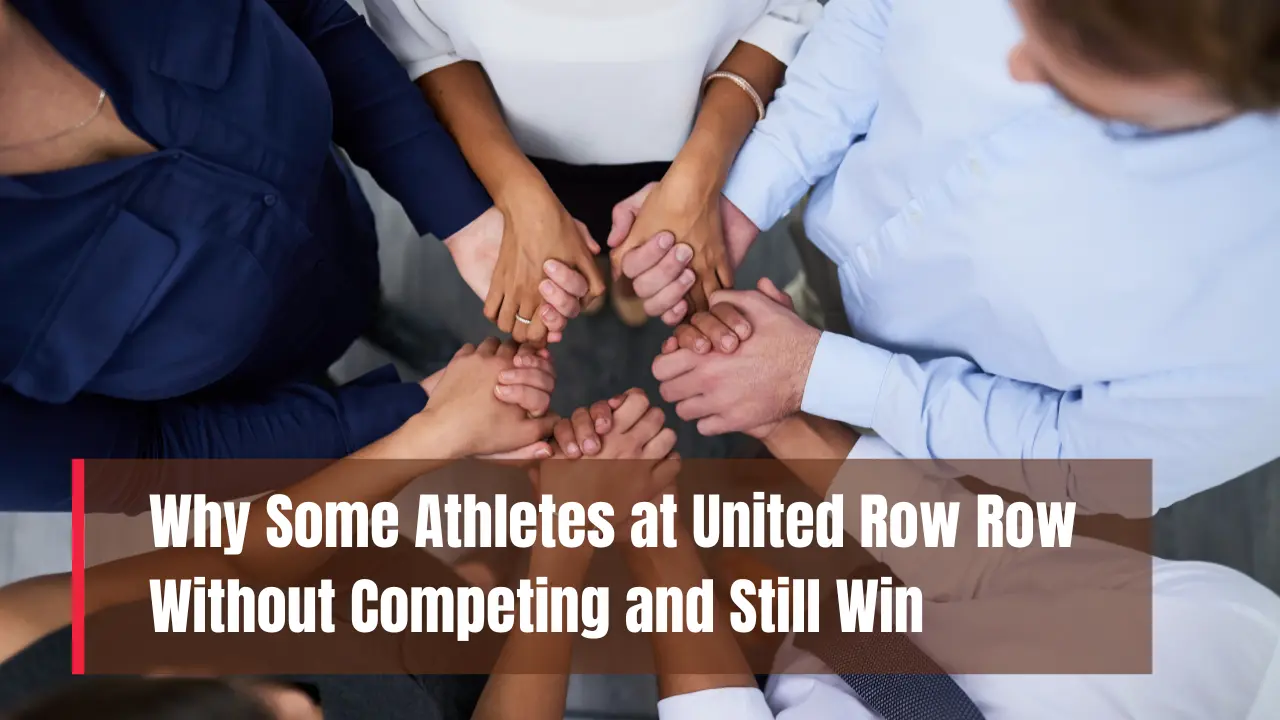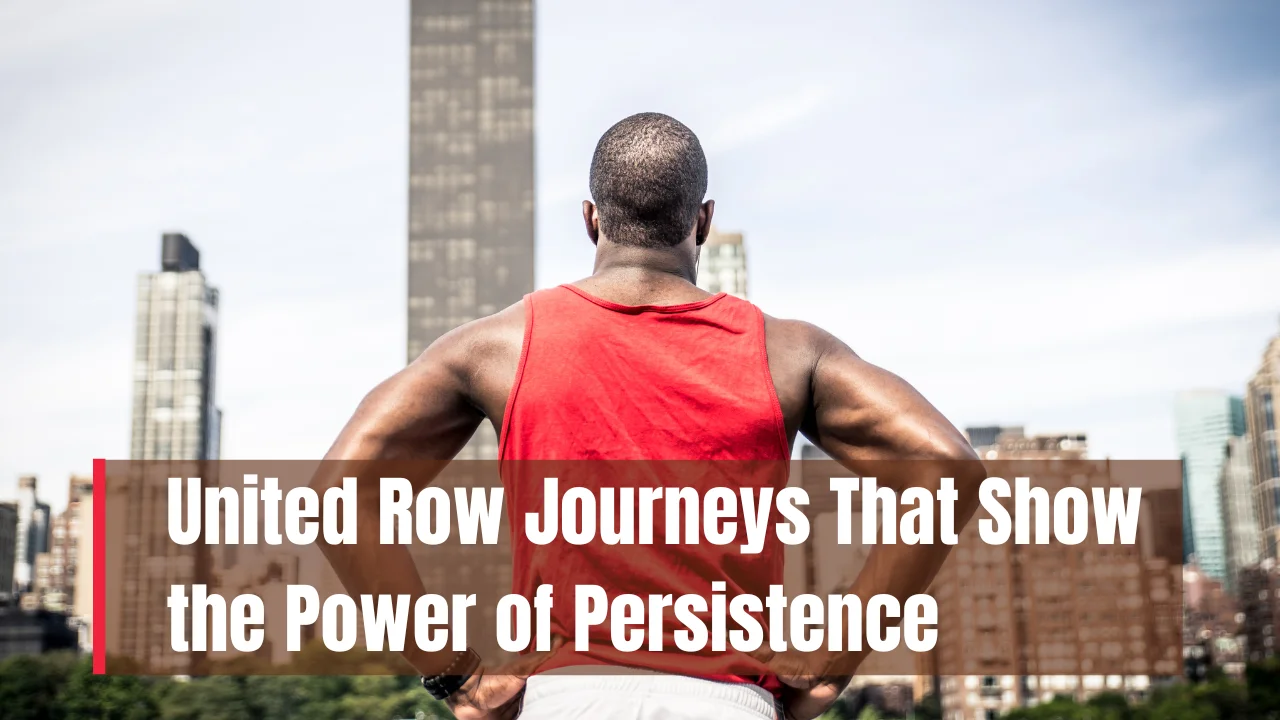United Row: United Row is becoming a spotlight event in the world of competitive rowing, but one aspect of it continues to baffle fans and casual viewers alike. Some athletes appear on the winner’s list even though they were never seen racing in the main heats. This isn’t a mistake, nor is it a case of hidden races. It’s a strategic and structural element of the competition that many people simply don’t understand yet.
In rowing tournaments like United Row, outcomes aren’t always decided in front of the cameras. The structure of the competition, the use of performance-based progression, pre-race seeding, and energy management all contribute to athletes progressing—and even winning—without participating in every visible round. This article dives deep into how that works.
What is United Row and How Does It Work?
United Row is structured differently than many traditional sporting events. Instead of requiring all competitors to race in every round, the system is designed to reward early performance, protect high-ranking athletes, and increase the efficiency of the entire competition. This results in some athletes advancing or even securing podium finishes without rowing in every visible race. These are not loopholes, but strategic mechanisms built into the competition framework.
Overview Table: A Quick Glance at United Row Competition Dynamics
| Key Element | Description |
| Competition Format | Multi-stage rowing event with heats, repechages, semifinals, and finals |
| Advancement Rule | Top finishers in early heats often skip to later rounds |
| Athlete Seeding | Based on past performance or qualification events |
| Strategic Resting | Athletes may skip races to conserve energy |
| Data-Driven Progression | Metrics like time, stroke rate, and efficiency affect rankings |
| Team-Based Tactics | Crews manage effort and timing strategically |
| Viewer Misconception | Non-participation seen as absence, not strategy |
| Outcome | Athletes can win without competing in every race |
How United Row Works
To the average viewer, United Row might look like a straightforward race event. But its structure is built for both performance and longevity. It consists of multiple stages—initial heats, repechages (second chances), semifinals, and the finals. The results from early rounds dictate which athletes need to continue competing and which are automatically advanced. That’s where the confusion begins.
For instance, if an athlete or team wins their initial heat with a strong time, they might be slotted directly into the semifinal, bypassing the repechage. If they then secure a top position in the semifinal, they go straight to the final—sometimes with less exposure than other athletes who had to compete in every round.
Team-Based Wins Without Competing
In team rowing competitions, strategy plays as big a role as strength or speed. Team managers and coaches monitor data constantly and often decide to rest top-performing rowers during certain rounds. This is especially true when teams know their times from a previous heat are strong enough to carry them forward.
This kind of management keeps rowers fresh and lowers the risk of injury. In United Row, winning isn’t about appearing in every race. It’s about appearing in the right ones—and winning them.
Seeding and Pre-Qualification
Seeding is a crucial part of why some athletes don’t need to compete in early rounds. Based on past rankings or performance in qualifying events, certain athletes are seeded into later stages of the competition. They may bypass the initial heats entirely, meaning their first appearance might be in the semifinal or even the final.
These athletes aren’t skipping work—they’ve already done it. Their prior performance in other tournaments has earned them the right to enter late. United Row uses this system to reward consistency and past excellence.
Strategy in Competitive Rowing
Competitive rowing isn’t just physical. It’s deeply analytical. Coaches and athletes study race formats, competitor strengths, fatigue trends, and even water conditions. Choosing to skip a heat or save energy for a final isn’t lazy—it’s tactical.
In United Row, there’s a clear benefit to holding back when allowed. Top teams treat every stroke like a resource, conserving effort for when it matters most. In many cases, those who appear less frequently are actually managing their performance at a higher level.
Performance Metrics Matter Too
One of the lesser-known aspects of United Row is how much performance data influences competition outcomes. Athlete performance is tracked digitally, using onboard sensors that measure stroke rate, split times, and power output. This data is sometimes used to rank athletes or determine progression without a visible race.
So even if an athlete isn’t seen in a heat, they may have already delivered a time or performance in a qualifying race or training session that’s been logged and counted toward advancement.
Two Key Points Why Athletes May Win Without Competing:
- Direct Qualification From Heats:
In United Row, top finishers in the opening heats often get a direct pass to the semifinals or finals. If they’ve performed well early, there’s no need to appear in every race. - Pre-Race Seeding & Rankings:
Athletes with high international rankings or previous competition wins may be pre-seeded. Their spots are secured based on earlier performances, not the current round visibility.
United Row and Modern Rowing Rules
Modern rowing formats are shifting away from over-exhaustion and toward athlete longevity. United Row reflects this evolution. By allowing performance-based advancement, the event minimizes unnecessary repetition, reducing burnout and injury risks.
This model encourages smarter competition. It also adds a layer of intrigue for viewers who follow athlete data and team strategy, rather than just race results.
Public Misunderstanding and Clarification
Many casual viewers get confused because they only see who rows—not how the rules work. Seeing an athlete win without racing in a particular heat feels odd. But when you understand seeding, data tracking, and strategic rest, the picture becomes clear.
United Row isn’t about racing more—it’s about racing smart. And sometimes, smart means skipping the middle to win in the end.
Final Thoughts
The idea that an athlete can win without competing in every round may seem unfair at first glance. But once you understand the strategic framework of United Row, it makes perfect sense. This competition isn’t just a physical test; it’s a mental and tactical challenge. Athletes and coaches work behind the scenes to read the rules, read the conditions, and read the competition.
What looks like skipping to the finish line is actually the result of intense preparation, smart management, and razor-sharp execution. It’s time we recognize that in events like United Row, winning isn’t just about being seen—it’s about being smart when it counts.
If this opened your eyes to the world of competitive rowing strategy, feel free to share or drop your thoughts in the comments. And while you’re here, why not explore more insights into your personal sports profile or check out your athletic horoscope?
FAQs
Why do some athletes not race but still advance in United Row?
Because they qualified through earlier performance or were seeded into later rounds based on ranking or previous wins.
Is it common for athletes to skip rounds in professional rowing?
Yes, especially in large competitions where energy conservation and strategy are key to long-term success.
How are rankings determined in United Row?
Through a mix of heat results, seeding based on past events, and performance metrics collected via onboard tech.
Can any athlete skip rounds, or only top performers?
Only athletes who meet specific criteria—like winning a heat or being pre-qualified—can skip rounds.
Do all rowing events use this type of format?
Not all, but it’s becoming more common in modern, large-scale competitions like United Row.












